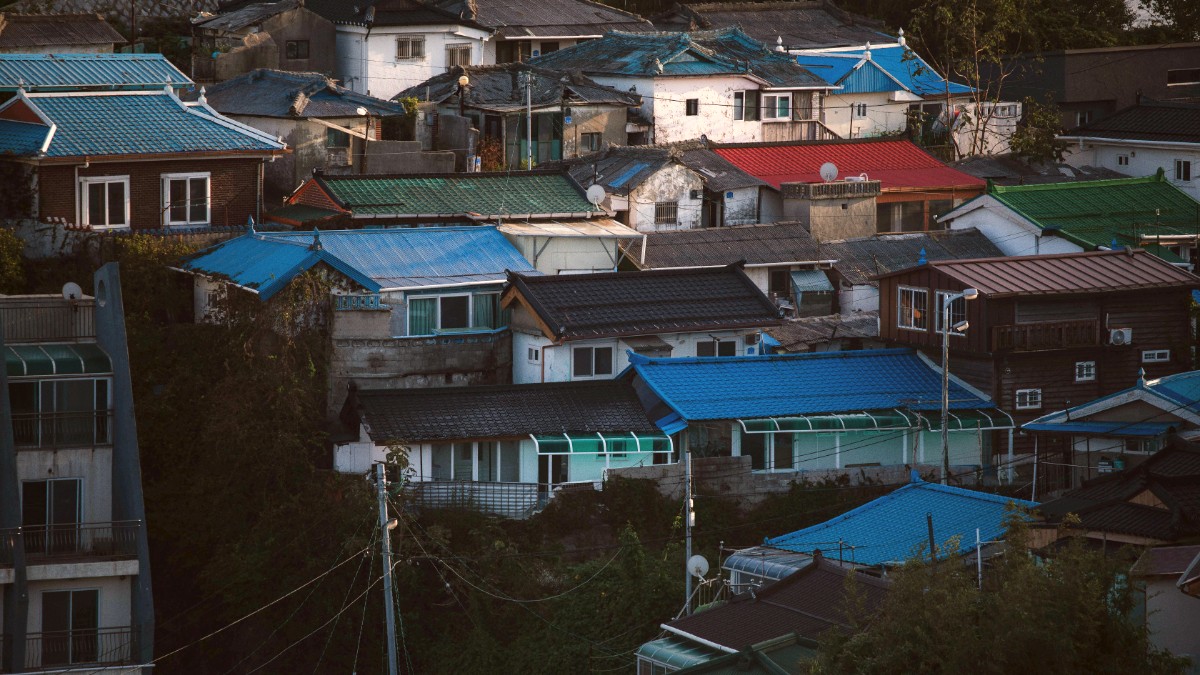
Gang Won Do, South Korea
Here, the energy of a popular beach resort meets the quiet dignity of ancient Confucian traditions. Travelers discover a setting for diverse experiences, from adventurous hikes in nearby mountains to tranquil afternoons by a lake, or lively evenings in a bustling market. This guide unlocks the varied layers of Gangneung. Prepare to collect lasting memories in a city known for its welcoming spirit and striking beauty.
Gangneung occupies an unique and visually striking position within South Korea. It sits prominently on the east coast of Gangwon Province, directly facing the vast expanse of the East Sea. This location places it approximately 230 kilometers, or about 143 miles, east of Seoul, making it an accessible coastal escape from the capital. The journey from Seoul unfolds through varied landscapes, culminating in the dramatic coastal scenery.
The city's geography defines much of its character. To its west, the majestic Taebaek Mountains rise abruptly, forming a natural barrier. These mountains provide a picturesque backdrop and create a rain shadow effect, influencing local weather patterns. The Taebaek range means that while Gangneung itself is a coastal city, mountainous terrain and opportunities for hiking or winter sports lie a short distance away. This location presents a diverse natural environment within easy reach.
Gangneung possesses a deep and enduring history, stretching back to ancient times. Its past shapes its present identity. The city's history extends to the Jinhan Confederacy, an early tribal state on the Korean peninsula, indicating its long-standing role as a settled area. Later, during the Goryeo (918–1392) and Joseon (1392–1910) Dynasties, Gangneung grew into a significant regional center. Its coastal location, while sometimes vulnerable, also permitted access to trade and cultural exchange, helping its growth.
One of Gangneung's most prominent historical distinctions comes from its association with two important figures of the Joseon Dynasty: Sin Saimdang (1504–1551) and her son, Yi I (1536–1584), often known by his pen name, Yulgok. Sin Saimdang was an accomplished artist, calligrapher, and poet, revered as a model of womanly virtue and artistic talent. Her son, Yi I, became one of Korea's most important Confucian scholars and philosophers, alongside Yi Hwang (Toegye). Both mother and son appear on modern South Korean currency (Sin Saimdang on the 50,000 won note and Yi I on the 5,000 won note), highlighting their lasting legacy.
Birthplace of Sin Saimdang and Yi I, a traditional Joseon house.
UNESCO Intangible Cultural Heritage, an ancient shamanistic festival.
Gangneung hosted all ice events, leading to significant modern development.
A central point for recreation, reflecting the surrounding landscape.
A modern cultural identity with numerous independent cafes.
Gangneung also played an outstanding modern role as a sub-host city for the PyeongChang 2018 Winter Olympics. All ice events, including speed skating, figure skating, ice hockey, and curling, took place in Gangneung. This event brought significant development to the city, including improved transportation infrastructure like the KTX high-speed rail line connecting it directly to Seoul. The Olympics introduced Gangneung to a global audience, showing its capacity to host international events while retaining its local charm. This blend of ancient heritage and contemporary significance makes Gangneung a fascinating destination.
Gangneung's coastline features numerous beaches, each with its own character. Gyeongpo Beach, for instance, offers wide stretches of sand popular for swimming and sunbathing. Anmok Beach, just south, grew famous for its concentration of independent coffee shops lining the shore. These beaches are not just sandy strips; they are often backed by pine forests, offering shade and a pleasant contrast to the open sea. The city's coastal plains are relatively narrow, quickly giving way to the foothills of the Taebaek Mountains.
A prominent natural feature near the coast is Gyeongpo Lake, a large lagoon separated from the East Sea by a narrow strip of land. This lake is not merely a body of water; it is a central point for recreation and contemplation. Its calm waters reflect the surrounding landscape, delivering a peaceful contrast to the ocean's waves. Cycling paths circle the lake, making it a popular spot for leisurely rides, and its pavilions present quiet places to observe the scenery.
The combination of mountains, rivers, a large lake, and the expansive East Sea creates a diverse ecosystem and a varied landscape that supports both natural beauty and human activity. The city’s planners integrate these natural assets into the urban environment, ensuring that green spaces and coastal access remain readily available to residents and visitors. This careful planning makes Gangneung a destination where nature always feels close, enhancing the travel experience.
Gangneung presents a memorable experience for diverse travelers. Its appeal comes from a balanced offering of natural beauty, cultural depth, and modern conveniences. Here is a brief look at what defines Gangneung today:
Situated on South Korea's east coast in Gangwon Province, Gangneung is about 230 kilometers east of Seoul. The KTX high-speed train connects the two cities in under two hours, making it an easy weekend escape or a perfect addition to a longer South Korea itinerary. Its coastal position offers ocean views and a refreshing atmosphere.
Four distinct seasons. Summers are hot and humid, winters cold with occasional snow, springs mild, autumns crisp and clear.
Preserves traditional Korean values; culinary scene highlights fresh seafood and Chodang Dubu. A robust coffee culture thrives.
Swimming, sunbathing, watersports in summer. Hiking in Taebaek Mountains. Museums, historical houses, local festivals.
Main attractions in Gangneung include: